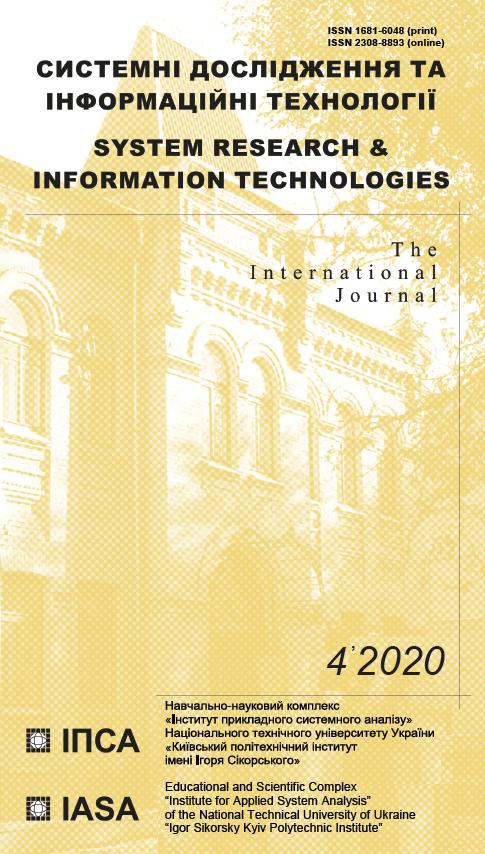Machine learning for diagnosis and monitoring of sleep apnea
DOI:
https://doi.org/10.20535/SRIT.2308-8893.2020.4.04Keywords:
monitoring, respiratory illnesses, deep learning, polysomnography, sleep apnea, CNNAbstract
This paper contains a review and analysis of applications of modern ma-chine learning approaches to solve sleep apnea severity level detection by localization of apnea episodes and prediction of the subsequent apnea episodes. We demonstrate that signals provided by cheap wearable devices can be used to solve typical tasks of sleep apnea detection. We review major publicly available datasets that can be used for training respective deep learning models, and we analyze the usage options of these datasets. In particular, we prove that deep learning could improve the accuracy of sleep apnea classification, sleep apnea localization, and sleep apnea prediction, especially using more complex models with multimodal data from several sensors.
References
L. Almazaydeh, K. Elleithy, and M. Faezipour, “A Panoramic Study of Obstructive Sleep Apnea Detection Technologies”, 28th International Conference on Computers and Their Applications, 2013.
F.W. Ward et al., “Home Diagnosis of Sleep Apnea: A Systematic Review of the Literature”, Chest, no. 124(4), pp. 1543–1579, 2003.
T.Young, L. Evans, L. Finn, and M. Palta, “Estimation of the Clinically Diagnosed Proportion of Sleep Apnea Syndrome in Middle-aged Men and Women”, Sleep, no. 20(9), pp. 705–706, 1997.
Electrocardiography [Online]. Available: https://en.wikipedia.org/wiki/Electro cardiography.
C. Varon et al., “A Novel Algorithm for the Automatic Detection of Sleep Apnea From Single-Lead ECG”, IEEE Transactions on Biomedical Engineering, no. 62(9), pp. 2269–2278, 2015.
M. Bsoul, H. Minn, and L. Tamil, “Apnea MedAssist: Real-time Sleep Apnea Monitor Using Single-Lead ECG”, IEEE Transactions on Information Technology in Biomedicine, no. 15(3), pp. 416–427, 2011.
M. Mendez et al., “Sleep Apnea Screening by Autoregressive Models From a Single ECG Lead”, IEEE Transactions on Biomedical Engineering, no. 56(2), pp. 2838–2850, 2009.
A. Bansal and R. Joshi, “Portable out-of-hospital electrocardiography: A review of current technologies”, Journal of Arrhythmia, no. 34(2), pp. 129–138, 2018.
T. Tamura, “Current progress of photoplethysmography and SPO2 for health monitoring”, Biomedical Engineering Letters, no. 9(1), pp. 21–36, 2019.
Photoplethysmogram [Online]. Available: https://en.wikipedia.org/wiki/Photoplethysmogram
A. Burgos, A. Goñi, A. Illarramendi, and J. Bermúdez, “Real-time detection of apneas on a PDA”, IEEE Transactions on Information Technology in Biomedicine, no. 14, pp. 995–1002, 2010.
G. Angius and L. Raffo, “A sleep apnoea keeper in a wearable device for continuous detection and screening during daily life”, 2008 Computers in Cardiology, pp. 433–436, 2008.
A. Petrenko, R. Kyslyi, and I. Pysmennyi, “Detection of human respiration patterns using deep convolution neural networks”, Eastern-European Journal of Enterprise Technologies, no. 4, pp. 6–13, 2018.
C.M. Botelho, I. Trancoso, A. Abad, and T. Paiva, “Speech as a Biomarker for Obstructive Sleep Apnea Detection”, IEEE International Conference on Acoustics, Speech and Signal Processing (ICASSP), pp. 5851–5855, 2019.
T. Kim, J. Kim, and L. Kyogu, “Detection of sleep disordered breathing severity using acoustic biomarker and machine learning techniques”, BioMedical Engineering OnLine, no. 17, 2018.
C. Yang et al., “Sleep Apnea Detection via Depth Video & Audio Feature Learning”, IEEE Transactions on Multimedia, no. 19, pp. 822–835, 2017.
Rohan S. Puri et al., “Design and preliminary evaluation of a wearable device for mass-screening of sleep apnea”, 2016 38th Annual International Conference of the IEEE Engineering in Medicine and Biology Society (EMBC), pp. 1870–1873, 2016.
A. Miech, I. Laptev, and J. Sivic, “Learning a Text-Video Embedding from Incomplete and Heterogeneous Data”, ArXiv, 2018.
Guo-Qiang Zhang et al., “The National Sleep Research Resource: towards a sleep data commons”, Journal of the American Medical Informatics Association: JAMIA, no. 25, pp. 1351–1358, 2018.
T. Penzel, G. Moody, and R. Mark, “The apnea-ECG database”, Computers in Cardiology 2000, no. 27, pp. 255–258, 2000.
B. Kemp et al., The Sleep-EDF Database [Expanded], 2018. [Online]. Available: https://physionet.org/content/sleep-edfx/1.0.0/. doi: 10.13026/C2X676
W. McNicholas et al., St. Vincent’s University Hospital / University College Dublin Sleep Apnea Database. 2004. [Online]. Available: https://physionet.org/content/ ucddb/1.0.0/. doi: 10.13026/C26C7D.
A.G. Ravelo-García, “APNEA HRV DATASET”, Mendeley, 2018. [Online]. Available: https://data.mendeley.com/datasets/vv6wdpbrsh/1.
A. Goldberger et al., “PhysioBank, PhysioToolkit, and PhysioNet: components of a new research resource for complex physiologic signals”, Circulation, no. 101, pp. E215–20, 2000.
S. Biswal, H. Sun, and B. Goparaju, “Expert-level sleep scoring with deep neural networks”, Journal of the American Medical Informatics Association: JAMIA, no. 25, pp. 1643–1650, 2018.
J.M. Perero-Codosero et al., “Modeling Obstructive Sleep Apnea Voices Using Deep Neural Network Embeddings and Domain-Adversarial Training”, IEEE Journal of Selected Topics in Signal Processing, no. 14, pp. 240–250, 2020.
R.K. Pathinarupothi et al., “Instantaneous heart rate as a robust feature for sleep apnea severity detection using deep learning”, IEEE EMBS International Conference on Biomedical & Health Informatics (BHI), pp. 293–296, 2017.
R.P. Krishnan et al., “Single Sensor Techniques for Sleep Apnea Diagnosis using Deep Learning”, IEEE International Conference on Healthcare Informatics (ICHI), pp. 524–529, 2017.
M. Cheng et al., “Recurrent Neural Network Based Classification of ECG Signal Features for Obstruction of Sleep Apnea Detection”, IEEE International Conference on Computational Science and Engineering (CSE) and IEEE International Conference on Embedded and Ubiquitous Computing (EUC), no. 2, pp. 199–202, 2017.
T. Van Steenkiste, D. Deschrijver, and T. Dhaene, “Sensor Fusion using Backward Shortcut Connections for Sleep Apnea Detection in Multi-Modal Data”, Machine Learning for Health Workshop, pp. 112–125, 2020.
T.Q. Le and S.T. Bukkapatnam, “Nonlinear Dynamics Forecasting of Obstructive Sleep Apnea Onsets”, PLoS ONE, no. 11, 2016.

